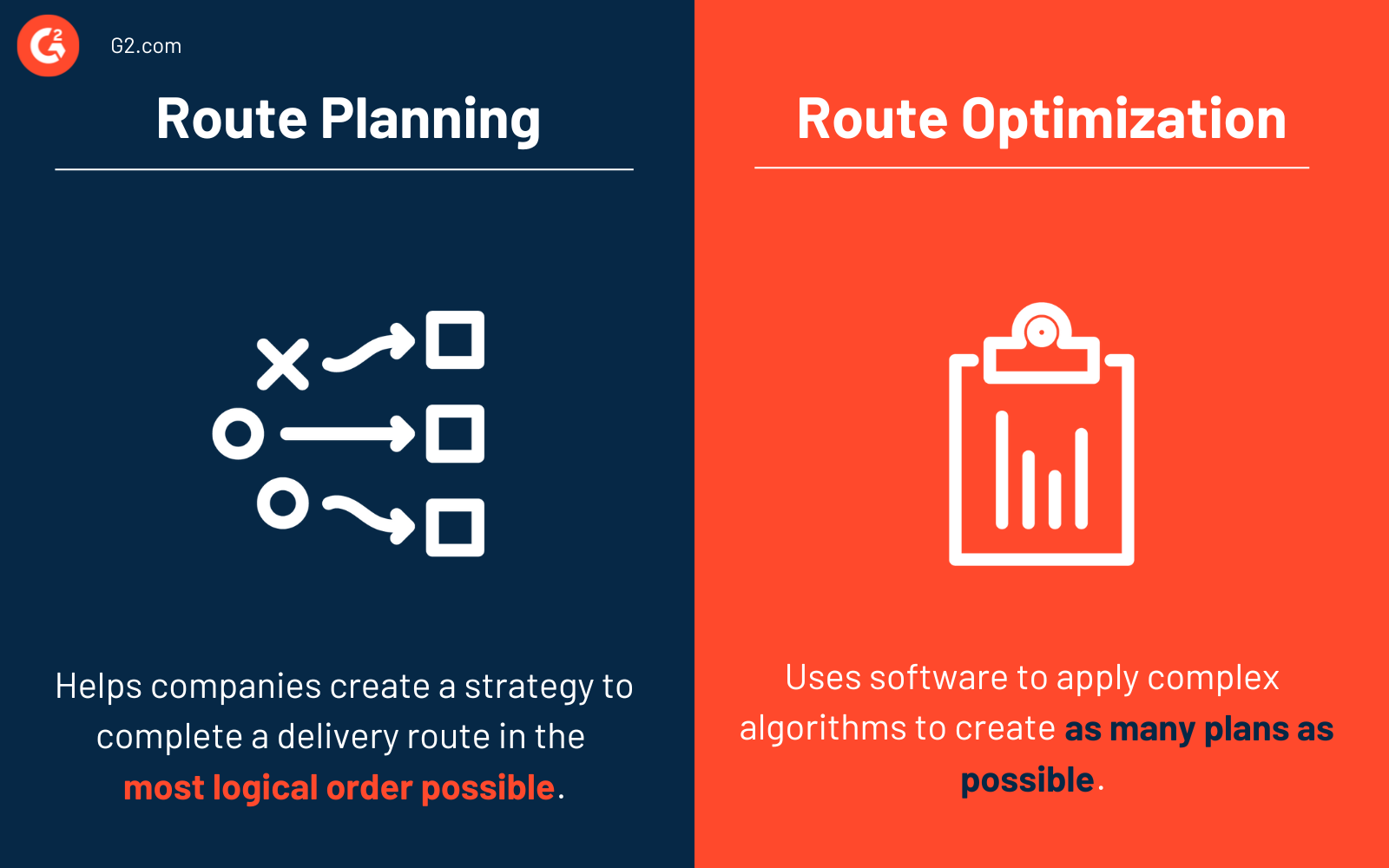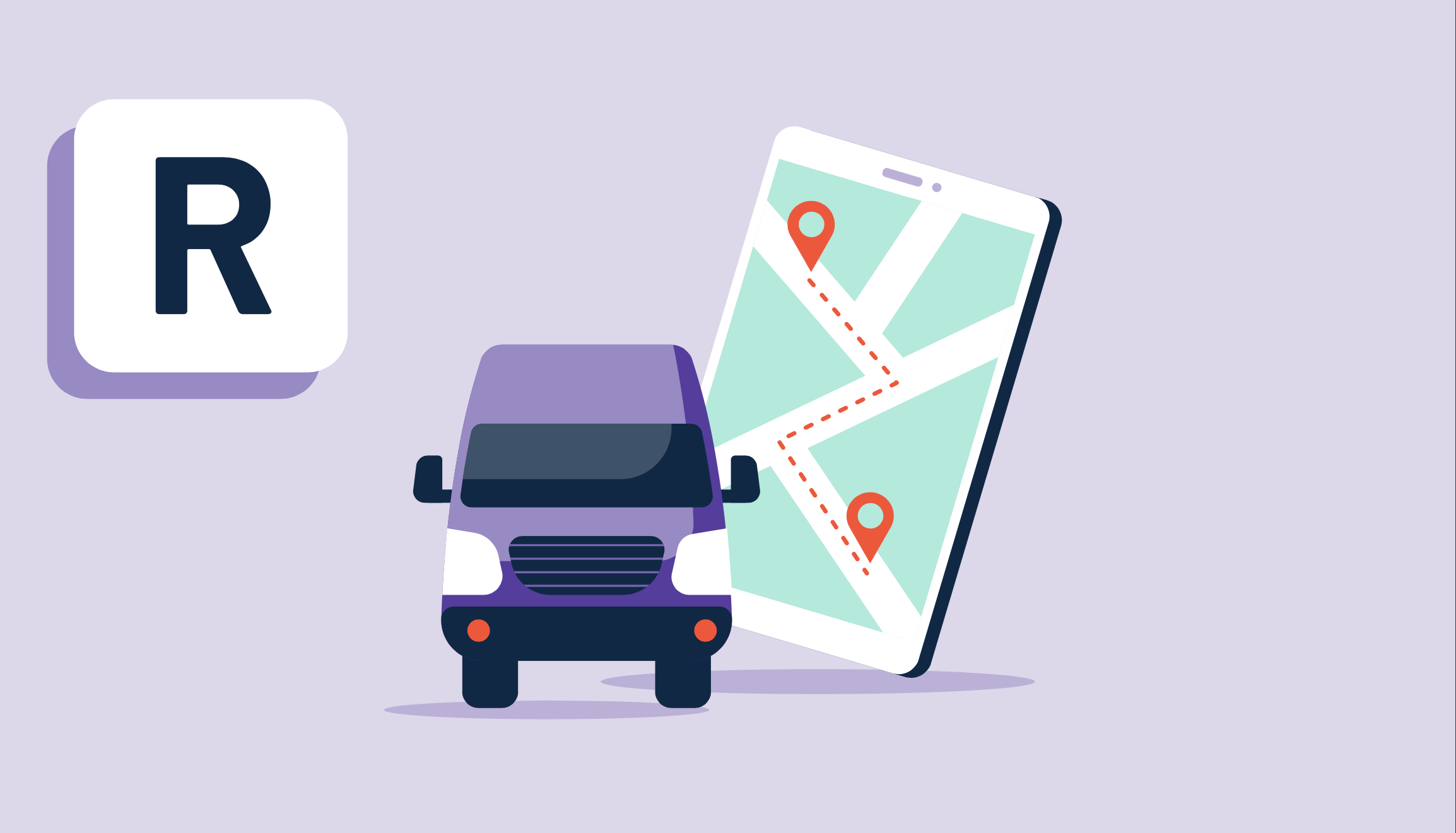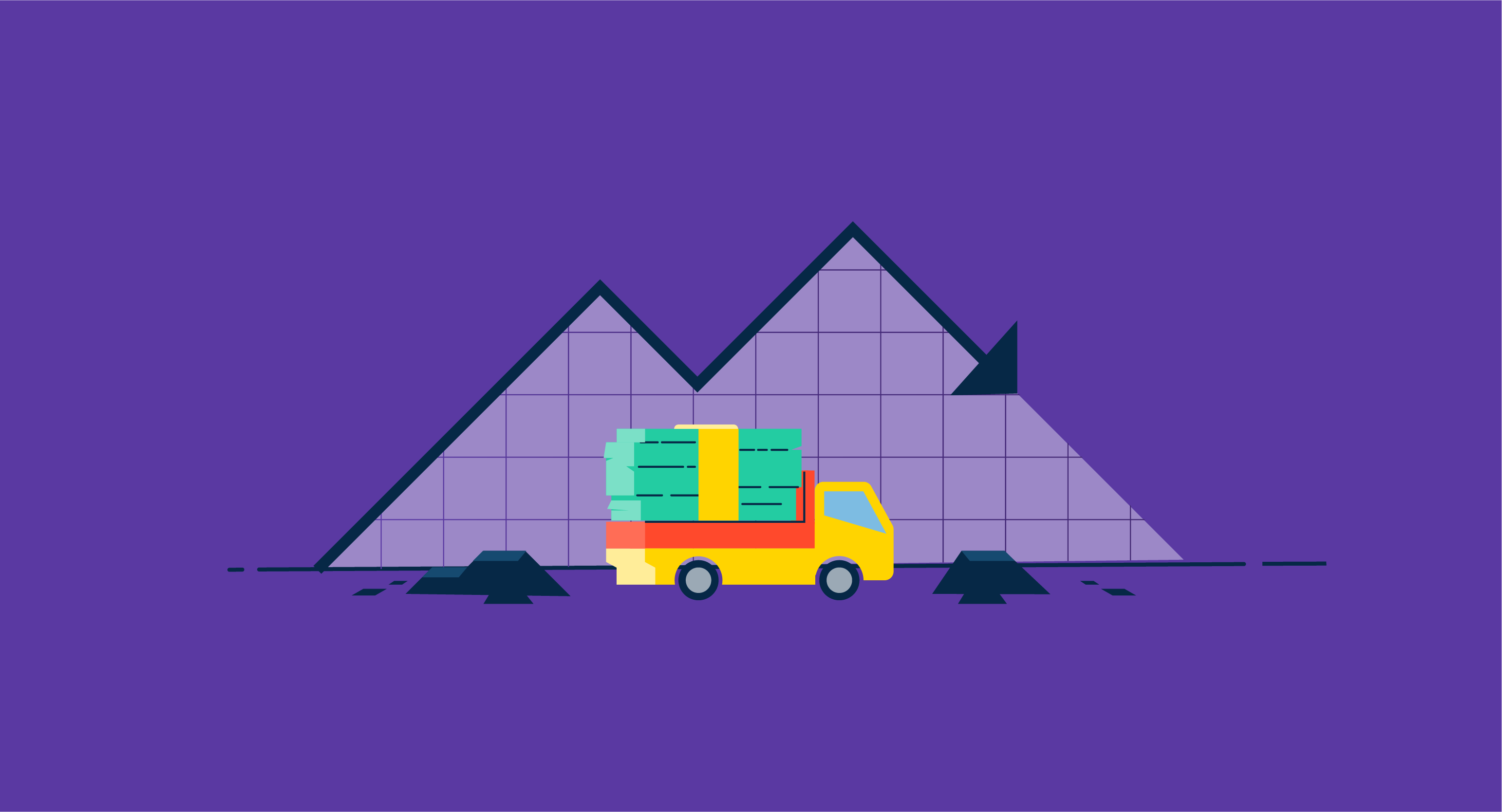What is route planning?
Route planning is the process of creating a comprehensive plan for delivering goods from one place to another. The main goal of route planning is to complete deliveries while determining the most efficient method for preserving time, money, and fuel. With effective route planning, businesses can decrease operational costs and increase customer satisfaction.
Some companies, like those specializing in transportation and shipping, utilize route planning software to optimize the creation of routes and schedules. Route planning solutions allow companies to build customizable route suggestions, estimate delivery times, prepare for potential shipping limitations, collaborate with drivers and dispatchers, and track delivery and driver performance. Route planning tools can also be integrated with shipping and field service management software.
Why is route planning important?
Having an extensive number of pending deliveries can cause a lot of stress on companies. Whether a company is writing down addresses with paper and pen or using multiple forms of transportation technology, route planning can help to make the process more efficient.
Route planning is essential for businesses that want to:
- Identify optimal route availability quickly
- Support customer delivery requirements
- Control labor costs
- Decrease vehicle wear and tear
- Improve their delivery services
Types of route planning
There are six major types of route planning. Each helps optimize the way companies plan their deliveries. Many of these route plans can be combined to meet specific company delivery needs.
- Dynamic route planning creates multiple delivery route options to accommodate traffic or weather issues. These different route plans also account for changes to an order when it is already out for delivery. Since these routes are so thoroughly planned, they can even be taken over by other vehicles should the original run into any problems.
- Multi-stop route planning creates routes to increase the number of stops a driver can visit in one round. This includes putting multiple stops in the most efficient order with the best directions from one stop to the next.
- Open path routing focuses on a planning route that services the necessary stops as fast as possible, from closest to farthest. A drawback with this type of routing is that it does not account for where the route will end and how far away it may be from the return warehouse.
- Closed path routing keeps the last drive back to the return warehouse in mind. Compared to open path routing, the drawback is that closed path routes may take longer to complete because they are strategically made to accommodate the return stop.
- Reverse open path routing switches up open path routing by planning the route from the farthest delivery point to the closest. This method may be the most favorable for conserving fuel and ensuring that all vehicles return as soon as possible with little room for error.
- Depot to depot routing is best for companies that want their drivers to pick up and drop off packages at different depots or warehouses along their route.
Benefits of effective route planning
An effective route plan helps companies perfect the way they get from point A to point B, while helping them stay prepared for anything in between.
- Adapt with ease with backup plans. Route planning prioritizes being ready for anything that may affect the delivery process. The right strategy will consider options for quick and seamless adaptation that will hopefully not affect the route.
- Optimize continuously by practicing trial and error. Route planning offers a space for learning from previous plans to make future plans more efficient.
- Keep customers informed by offering delivery transparency. Having an organized route plan allows for precise delivery updates. Companies that prioritize open communication with their customers are met with higher rates of satisfaction and retention.
- Reduce fuel and maintenance costs by having vehicles out on the road for less time. The right route plan will help vehicles return faster. As a result, vehicles are met with less wear and tear, more fuel for future routes, and fewer labor costs.
- Improve correspondence with drivers by providing clear, comprehensive plans. Route planning also keeps the driver’s safety at the forefront by planning for potentially dangerous weather conditions.
How to plan a route
The route planning process is all about collecting as much information as possible, finding the best way to build the route, and communicating the plan.
- Collect locations. This includes the exact addresses of every necessary stop on the route.
- Compile delivery information. The customer should provide any special delivery instructions that could affect the route. For example, a customer may have a specific place where they want their package placed or request that the driver call them upon arrival.
- Choose a type of route plan. At this point, companies should determine which route type fits their delivery goals. If they hope to deliver as fast as possible, an open path route would be the most favorable. If they prefer to prioritize the driver’s return, a closed path route will work better.
- Calculate the most effective route. A company should consider the stops and the type of route and begin building the plan. This includes clear instructions on how to get from one stop to the next. They may do this by utilizing different map applications or route software integrated with transportation management systems.
- Communicate with drivers. The most important part is ensuring that those who will be completing the route understand all the instructions. Companies should take extra time to explain the plan and address any concerns from the driver.
Factors that affect route planning
There are a couple of factors that will affect how a company creates a route plan. These factors can be easily accounted for in a comprehensive plan but will affect the type of plan and how efficient it can be.
- Transportation costs like refueling and tolls
- Vehicle capacity and how much can be delivered at one time. Overloading causes extra wear and tear on a vehicle, and stops to reload the vehicle will affect route timing.
- Delivery information like special customer requests
- Timing delays like extreme weather conditions, road closures, car accidents, school zones, and general traffic
- Driver working hours that must be respected when creating the route plan
Route planning vs. route optimization
Many confuse route planning with route optimization, but the two are different.

The main objective of route planning is to help companies create a strategy to complete a delivery route in the most logical order possible. This means that it takes separate points and connects them in the best way it knows how. Route planning starts with a predetermined list of locations, and the planner may use tools like Google Maps or Waze to arrange everything.
Route optimization applies complex algorithms to create as many plans as possible. Route optimization software is used to automate the production of these plans, and one tool can develop hundreds of route variations. Using dynamic route optimization can help a company save the time it takes to manually plan and prepare several backups to prepare for potential concerns.
The main drawback of route optimization in comparison to route planning is its use of technology. The more technology, the more time and money needed to implement it and learn how to use it effectively.

Alexandra Vazquez
Alexandra Vazquez is a Senior Content Marketing Specialist at G2. She received her Business Administration degree from Florida International University and is a published playwright. Alexandra's expertise lies in writing for the Supply Chain and Commerce personas, with articles focusing on topics such as demand planning, inventory management, consumer behavior, and business forecasting. In her spare time, she enjoys collecting board games, playing karaoke, and watching trashy reality TV.





















